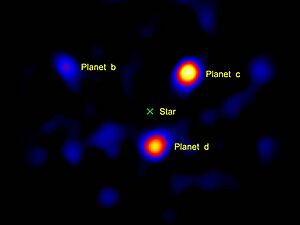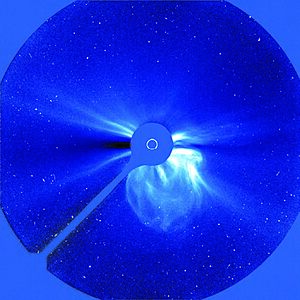Coronagraph facts for kids
A coronagraph is a special part that attaches to a telescope. It's made to block the super bright light from a star. This way, we can see faint objects near it, like extrasolar planets (planets outside our solar system), that would normally be hidden by the star's strong glow. Most coronagraphs are used to look at the corona of the Sun. The corona is the Sun's outer atmosphere. There are also "stellar coronagraphs" which are used to find planets around other stars.
Who Invented the Coronagraph?

The coronagraph was invented in 1930 by a French astronomer named Bernard Lyot. Since then, these tools have been used at many solar observatories around the world.
For example, the Hubble Space Telescope has special cameras that can work like a coronagraph.
Why Use Coronagraphs in Space?
Coronagraphs that are in outer space work much better than those on Earth. This is because there is no air in space. On Earth, our atmosphere scatters light, which creates a lot of glare. In space, there's no air to scatter light, so there's no glare. This makes the images much clearer.
Space missions like NASA and ESA's SOHO, SPARTAN, and Skylab have used coronagraphs. They help scientists study the outer parts of the Sun's atmosphere. The Hubble Space Telescope (HST) can also use its NICMOS (Near Infrared Camera and Multi-Object Spectrometer) instrument to do coronagraphy.
Images for kids
See also
 In Spanish: Coronógrafo para niños
In Spanish: Coronógrafo para niños





